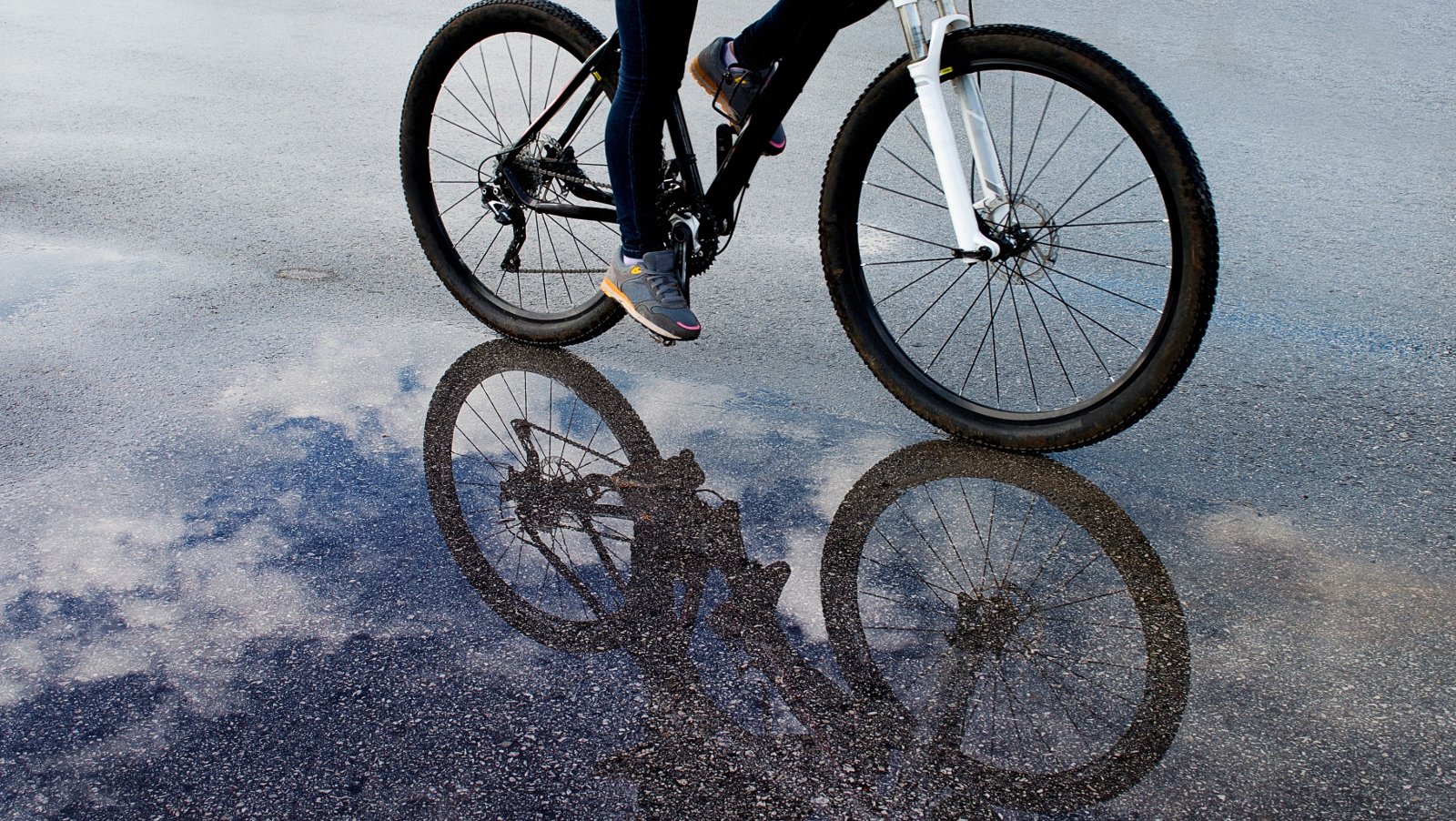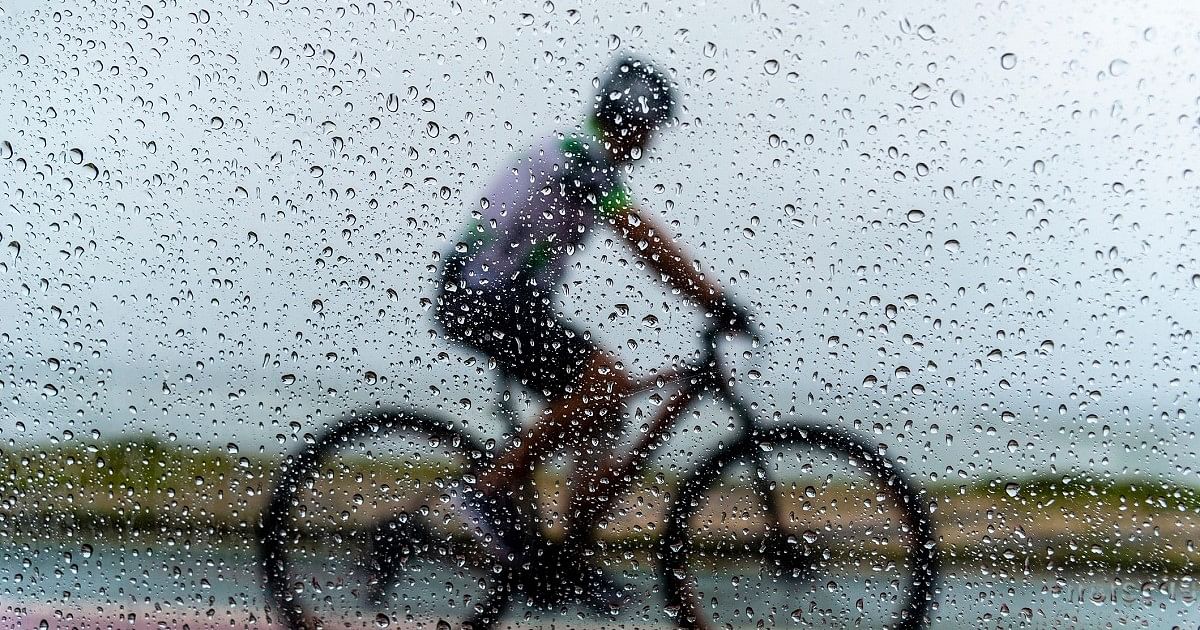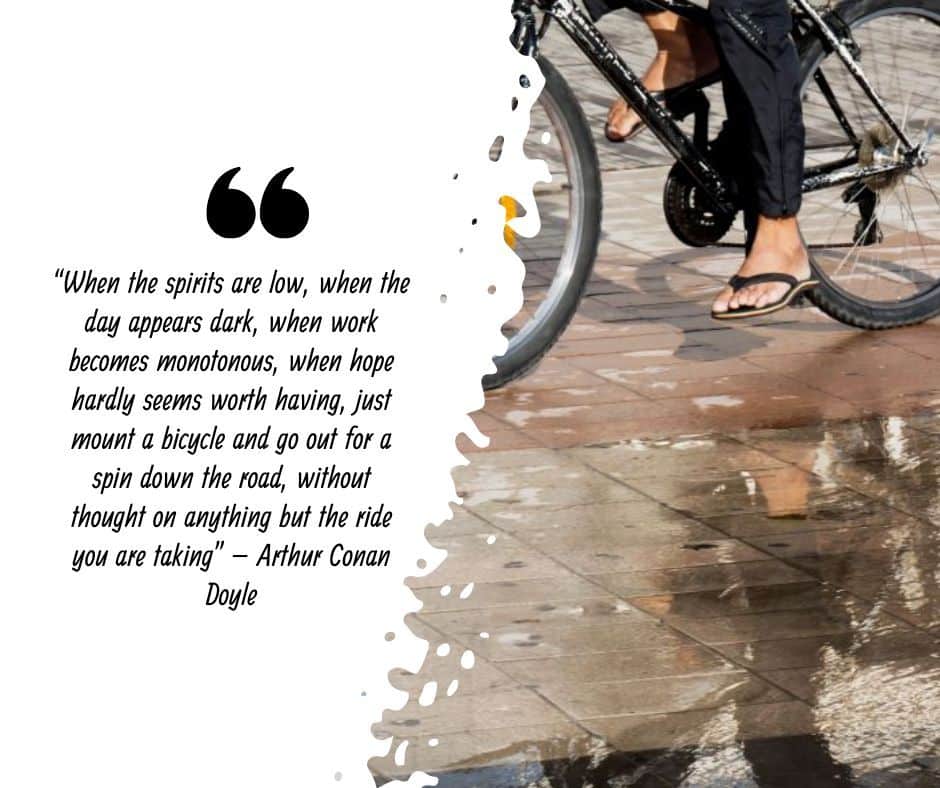Why Rainy Days Don’t Have to Dampen Your Cycling Spirit
Cycling in the rain can be a daunting task, but with the right mindset and preparation, it can also be a thrilling and rewarding experience. By embracing the rain, cyclists can improve their cycling skills, build confidence, and develop a stronger mental toughness that will benefit them in all aspects of their life.
The benefits of continued cycling practice in the rain are numerous. Cyclists in the rain will maintain their physical fitness, build confidence, and develop a sense of accomplishment that comes with overcoming adversity. Additionally, cycling in the rain can be a great way to clear their mind, relax, and enjoy the peacefulness of the outdoors, free from the crowds and chaos of sunny days. Many cyclists in the rain find that the rain adds an extra layer of excitement and challenge to their ride, making it a unique and exhilarating experience.
Being prepared to cycle in the rain is crucial. This includes having the right gear, adapting cycling techniques, and being mindful of visibility and safety. With the right attitude and preparation, cyclists in the rain will discover that rainy days can be just as enjoyable and rewarding as sunny ones. By understanding the importance of being prepared, cyclists can overcome their fears and build confidence in cycling in the rain, ultimately becoming a more skilled and resilient cyclist in the rain.
How to Choose the Right Gear for Rainy Day Cycling
When it comes to cycling in the rain, having the right gear can make all the difference between a comfortable and enjoyable ride, and a miserable and dangerous one. As a cyclist in the rain, it’s essential to invest in gear that will keep you dry, visible, and safe on the roads.
A waterproof jacket and pants are a must-have for any cyclist in the rain. Look for gear with a breathable and waterproof membrane, such as Gore-Tex or similar technology. This will help keep you dry and comfortable, even in the heaviest of downpours. Additionally, consider investing in waterproof shoes or shoe covers to keep your feet dry and warm.
Mudguards are another essential piece of gear for rainy day cycling. They help to protect you from mud and water spray, keeping you clean and dry. Look for mudguards that are specifically designed for your type of bike, and consider adding a mudguard to the front and rear wheels for maximum protection.
Lighting is also crucial for cyclists in the rain. Invest in a good set of front and rear lights, and consider adding additional lights to your pedals or wheels for increased visibility. This will help you to see and be seen on the roads, even in low-light conditions.
Other essential gear for rainy day cycling includes a waterproof bag or pannier to carry your gear, a cycling cap or helmet cover to keep your head dry, and a set of warm and waterproof gloves to keep your hands dry and comfortable.
Mastering Rainy Day Cycling Techniques: Braking, Cornering, and More
When cycling in the rain, it’s essential to adapt your techniques to suit the wet conditions. A cyclist in the rain needs to be aware of the reduced traction and increased stopping distance, and adjust their riding style accordingly.
Braking is one of the most critical skills for a cyclist in the rain. To brake effectively, use both brakes simultaneously, and avoid sudden or hard braking. Instead, use gentle and gradual braking to slow down, giving yourself plenty of time to stop. It’s also essential to use the correct braking technique, with more emphasis on the rear brake to avoid skidding or losing control.
Cornering is another area where technique is crucial in rainy conditions. A cyclist in the rain should approach corners slowly and cautiously, using a wide arc to maintain control and avoid skidding. Look where you want to go, and avoid sudden turns or changes in direction. It’s also essential to keep your weight centered over the bike, with your knees bent and your arms relaxed.
Maintaining control on wet roads is also critical for a cyclist in the rain. To do this, focus on your body position, keeping your weight centered over the bike and your knees bent to absorb any bumps or shocks. Avoid sudden movements or changes in direction, and use gentle and smooth inputs on the handlebars to steer the bike.
Other essential techniques for a cyclist in the rain include using a lower gear to maintain traction, avoiding sudden acceleration or deceleration, and keeping a safe distance from other road users. By mastering these techniques, a cyclist in the rain can stay safe and confident on the roads, even in the most challenging conditions.
The Importance of Visibility and Safety in Low-Light Conditions
When cycling in the rain, visibility and safety become even more critical due to reduced light and increased hazards on the road. A cyclist in the rain must take extra precautions to ensure they are seen by other road users and can see the road ahead.
One of the most important aspects of visibility is reflective gear. A cyclist in the rain should wear reflective clothing, such as arm and leg bands, or attach reflective stickers to their bike to increase their visibility to motorists and other cyclists. Additionally, bright and bold clothing can help a cyclist in the rain stand out in low-light conditions.
Proper lighting is also essential for a cyclist in the rain. A good set of front and rear lights can help a cyclist see the road ahead and be seen by other road users. Look for lights that are specifically designed for rainy conditions, with features such as increased brightness and water resistance.
In addition to visibility, a cyclist in the rain must also prioritize safety. This includes riding defensively, anticipating the actions of other road users, and being prepared for unexpected hazards such as puddles or oil slicks. A cyclist in the rain should also be aware of their surroundings, keeping an eye out for potential hazards such as fallen branches or debris on the road.
By prioritizing visibility and safety, a cyclist in the rain can minimize their risk of accident or injury and enjoy a safe and enjoyable ride, even in the most challenging conditions.
Rainy Day Cycling Etiquette: Sharing the Road with Other Users
When cycling in the rain, it’s essential to remember that you’re not the only one on the road. A cyclist in the rain must be aware of their surroundings and adapt their behavior to ensure a safe and respectful coexistence with other road users.
One of the most critical aspects of rainy day cycling etiquette is courtesy towards pedestrians. A cyclist in the rain should always yield to pedestrians, especially in areas with heavy foot traffic, and be prepared to slow down or stop to avoid accidents.
Motorists also require special consideration in rainy conditions. A cyclist in the rain should be aware of their position on the road, avoiding sudden movements or changes in direction that could startle or confuse motorists. Additionally, a cyclist in the rain should use clear and consistent hand signals to communicate their intentions to motorists.
Fellow cyclists also deserve respect and consideration in rainy conditions. A cyclist in the rain should be mindful of their speed and position when approaching or overtaking other cyclists, and always maintain a safe distance to avoid collisions.
By practicing good rainy day cycling etiquette, a cyclist in the rain can help create a safer and more harmonious environment for all road users. This includes being aware of and adhering to local traffic laws and regulations, using appropriate hand signals, and being considerate of other road users’ needs and limitations.
Remember, a cyclist in the rain is an ambassador for the cycling community, and their behavior on the road can have a lasting impact on how cyclists are perceived by other road users. By practicing good etiquette, a cyclist in the rain can help promote a positive image of cycling and contribute to a safer and more enjoyable ride for everyone.
Staying Comfortable and Dry: Tips for Rainy Day Cycling
When cycling in the rain, staying comfortable and dry is crucial for a safe and enjoyable ride. A cyclist in the rain must take extra precautions to protect themselves from the elements and maintain their bike’s performance.
Dressing for the occasion is essential. A cyclist in the rain should wear waterproof and breathable clothing, such as jackets, pants, and shoes, to keep them dry and comfortable. Look for clothing with waterproof and windproof membranes, such as Gore-Tex or similar technology.
In addition to clothing, a cyclist in the rain should also use waterproof bags and accessories to keep their gear dry. This includes using waterproof panniers or saddle bags to store clothes, tools, and other essentials.
Maintaining bike cleanliness is also critical in rainy conditions. A cyclist in the rain should regularly clean their bike to remove dirt and grime that can accumulate and affect its performance. Use a soft brush and mild soap to clean the bike’s frame, wheels, and other components.
Another important aspect of staying comfortable and dry is using the right lubricants and cleaning products. A cyclist in the rain should use waterproof lubricants to protect their bike’s chain and other moving parts from rust and corrosion.
Finally, a cyclist in the rain should always carry a spare set of clothes and a waterproof jacket in case of unexpected delays or accidents. This will help them stay warm and dry while waiting for assistance or making repairs.
By following these tips, a cyclist in the rain can stay comfortable and dry, even in the most challenging conditions. Remember, a comfortable and dry cyclist is a safer and more confident cyclist.
Rainy Day Cycling Routes: Finding the Best Roads and Trails
Finding the right route is crucial for a safe and enjoyable ride in the rain. A cyclist in the rain should plan their route carefully to avoid busy roads, construction zones, and other hazards.
One of the best ways to find a good rainy day cycling route is to use online resources such as cycling apps, websites, and forums. These resources can provide valuable information on road conditions, traffic patterns, and weather forecasts, helping a cyclist in the rain to plan their route accordingly.
Consulting with local cycling groups and clubs can also be a great way to find the best rainy day cycling routes. These groups often have extensive knowledge of the local roads and trails, and can provide valuable insights and recommendations.
Exploring alternative routes, such as bike paths, trails, and quiet neighborhood streets, can also be a great way to avoid busy roads and stay safe in the rain. A cyclist in the rain should always be on the lookout for alternative routes that can provide a safer and more enjoyable ride.
In addition to planning the route, a cyclist in the rain should also be prepared for unexpected changes in weather or road conditions. This includes carrying a waterproof map or GPS device, and being prepared to adjust the route as needed.
By taking the time to plan and prepare, a cyclist in the rain can find a safe and enjoyable route that allows them to enjoy the thrill of cycling in the rain. Remember, a well-planned route is key to a safe and enjoyable ride in wet conditions.
Overcoming Mental Barriers: Building Confidence in Rainy Day Cycling
For many cyclists, the thought of cycling in the rain can be intimidating. However, with the right mindset and preparation, a cyclist in the rain can overcome their fears and build confidence in wet conditions.
The key to building confidence is to start small. Begin by cycling in light rain or drizzle, and gradually work your way up to more challenging conditions. This will help you become comfortable with the feeling of cycling in the rain and build your confidence.
Another important aspect of building confidence is to focus on your skills and abilities. A cyclist in the rain should practice their braking, cornering, and other techniques in wet conditions to become more comfortable and confident.
Additionally, it’s essential to remember that cycling in the rain is not inherently dangerous. With the right gear, techniques, and mindset, a cyclist in the rain can have a safe and enjoyable ride.
Perseverance and practice are also crucial in building confidence. The more you cycle in the rain, the more comfortable and confident you will become. Don’t be discouraged by setbacks or mistakes – instead, use them as an opportunity to learn and improve.
Finally, it’s important to remember that cycling in the rain can be a fun and exhilarating experience. A cyclist in the rain should focus on the thrill of riding in wet conditions, and the sense of accomplishment that comes with overcoming their fears and building confidence.
By following these tips and advice, a cyclist in the rain can overcome their mental barriers and build confidence in wet conditions. Remember, with the right mindset and preparation, cycling in the rain can be a safe and enjoyable experience.









